Buxton STW (2022)
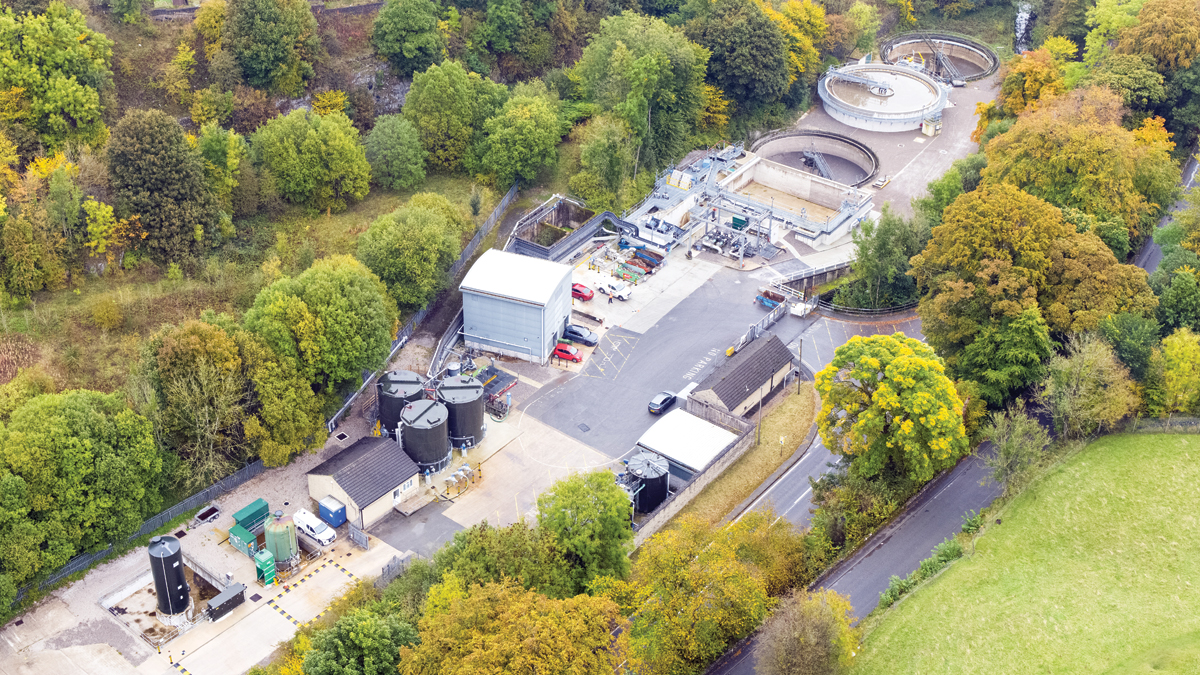
Aerial image of the completed Buxton STW - Courtesy of Severn Trent
Buxton Sewage Treatment Works (STW) serves the town of Buxton and the surrounding area in Derbyshire. It has a permitted flow to full treatment (FFT) of 195 l/s, a population equivalent of approximately 23,000 and is treating catchment wastewater and sludge imported from local rural works. Prior to 2003, the works was split across two sites along the River Wye, situated approximately half a mile apart with the preliminary, primary and sludge treatment (inlet works, primary tanks, plus digestion) in place at the first site and secondary treatment (biofilters and humus tanks) at the second site.
The 2003 project
In 2003, a major scheme was undertaken to replace the inlet works, remove the primary treatment in favour of additional storm storage capacity and install a replacement secondary treatment process in a disused quarry adjacent to the preliminary treatment site.
This scheme involved removal of the sludge treatment process and a new inlet works being installed in the basement of the vacated boiler house. Flows from preliminary treatment were then pumped to the secondary treatment stream which is an activated sludge plant (ASP) and Severn Trent’s only wastewater membrane biofilm reactor (MBR). The second site housing the original biofilters and humus tanks was later abandoned, and the land sold.
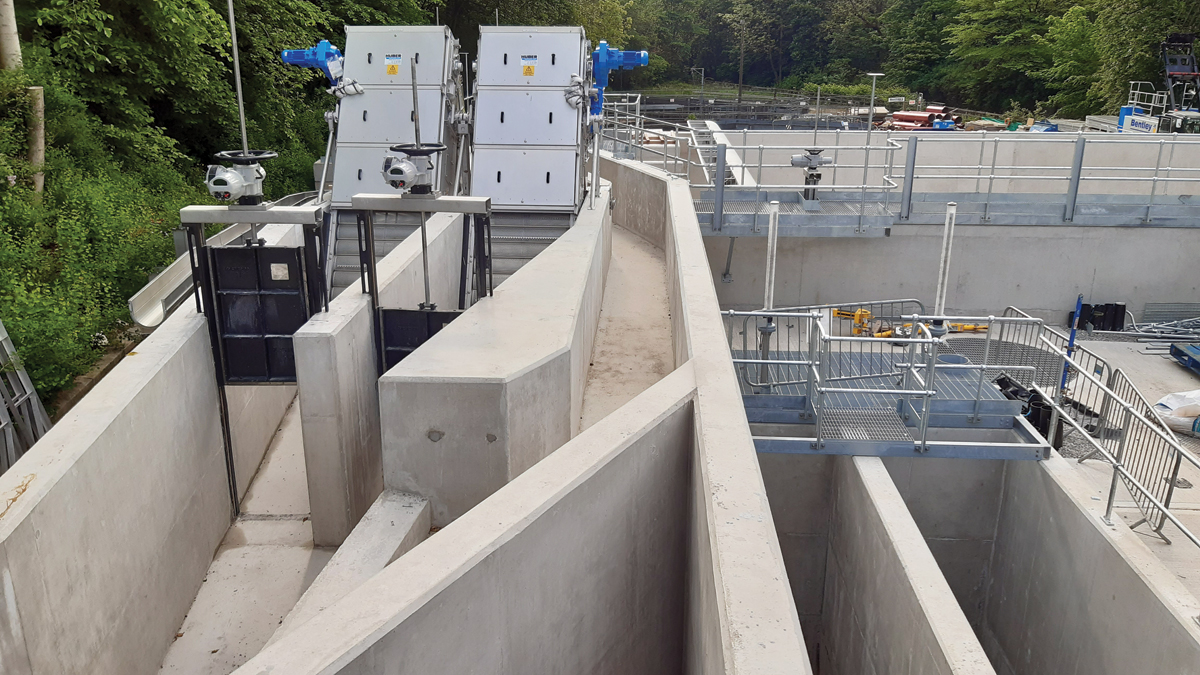
Inlet works during construction – Courtesy of Mott MacDonald Bentley
Introduction to the scheme
After several years of operating the MBR plant, Severn Trent discovered that lack of an effective inlet works and primary treatment made operation and maintenance of the plant labour intensive. It was found that screenings and biosolids were reaching the ASP and MBR in quantities significant enough to block mechanical equipment and the membrane itself. The 2003 inlet works already included 6mm and 3mm 2D screening and Severn Trent opted to install additional 2mm screens upstream of the ASP to try and reduce the ragging and solids build-up issues observed. Whilst this solution helped, maintenance and operation of the ASP and MBR plants remained more onerous than originally anticipated and the membrane cassettes were all replaced by Severn Trent in AMP6 because of the continuing issues with screenings reaching the membrane plant.
Severn Trent promoted an AMP6 scheme at Buxton as part of the Water Industry National Environment Programme (WINEP) to meet a tightening phosphorus limit of 0.2mg/l. Unlike most wastewater treatment sites which would require the installation of a tertiary solids removal plant to achieve this phosphorus limit, Buxton was already able to meet the requirement using its MBR provided that additional chemical dosing (coagulant plus pH balancing) was provided.
In addition to the WINEP requirements, Severn Trent was interested in resolving issues around screenings and excess solids reaching the MBR and as such, specified that primary treatment be re-added to the site. The addition of primary treatment back to the site was also thought to be a benefit in reaching the new phosphorus limit as concerns over coagulant blocking the MBR had been raised.
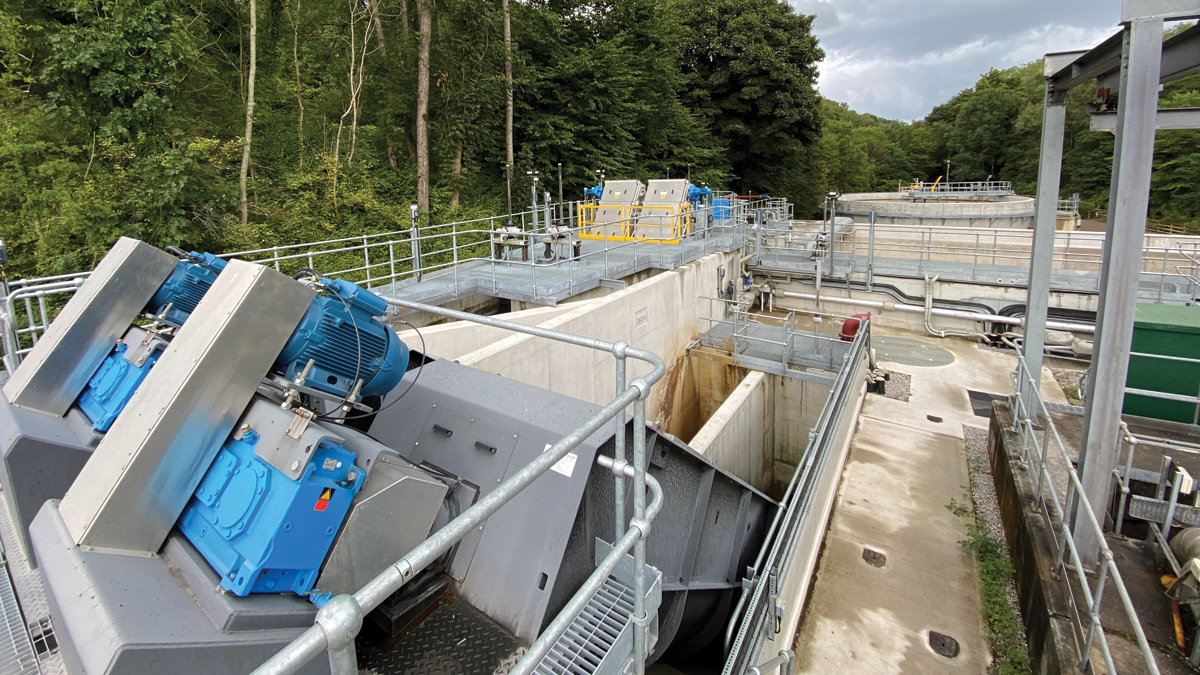
The new inlet works – Courtesy of Severn Trent
Once on board as the principal designer and principal contractor for the scheme, Mott MacDonald Bentley (MMB) worked collaboratively with Severn Trent to add the replacement of the inlet works to the scope for the scheme. The rationale for this was that replacement of assets in the currently underperforming inlet works was not likely to resolve the ragging issues as the design of this inlet works (built to suit the shape of the old boiler house) was more likely to be the problem.
This inlet works was designed with a zig-zag chicane of channels which introduced issues with flow presentation onto the inlet screens.
The full scope of the scheme is summarised below:
- Installation of a new sodium hydroxide dosing rig for pH balancing.
- Modifications to the existing ferric sulphate dosing rig to facilitate dual-point dosing of coagulant.
- Installation of a new preliminary treatment package including feed screw pumps, 6mm 2D screening with screens handling and vortex grit removal with associated grit handling.
- Installation of a new primary settlement tank (PST).
- Installation of three new sludge consolidation tanks complete with mixing and odour control provision.
- Installation of a new storm tank to replace capacity removed by the installation of primary settlement onto the site complete with an integrated cleaning system.
- Other minor capital maintenance works on existing site processes.
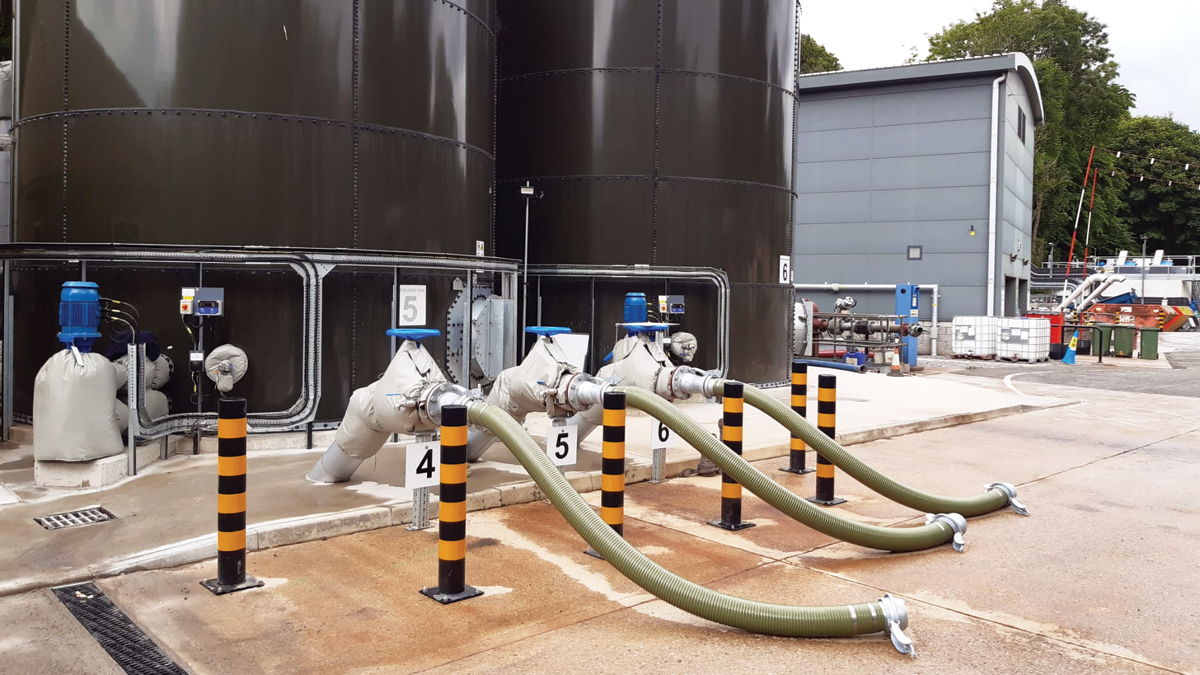
Primary sludge consolidation tanks – Courtesy of Mott MacDonald Bentley
Buxton STW: Supply chain – key participants
- Design & project delivery: Mott MacDonald Bentley
- Inlet screw pumps: Spaans Babcock Ltd
- Grit trap & grit handling plant: Jacopa Ltd
- Glass coated steel tanks: Goodwin Tanks Ltd
- Odour control units: Air-Water Treatments Ltd
- PST half bridge scraper & chemical dosing rigs: EPS Water
- Motor control centre & software: BGEN Ltd
- Electrical installation: PCS (UK) Ltd
- Flow controls: AFFCO Flow Control (UK) Ltd
- Reinforced concrete installation: Offafix Formwork Ltd
- Galvanised steel access platforms, walkways, staircases & handrailing: KG Site Services Ltd
Challenges
Several challenges were faced by the design and construction teams for the scheme, principally relating to the available space on site. The aerial photo below, showing the scheme in its early stages with only the temporary site setup and sodium hydroxide rig in place, clearly illustrates how confined the site is at Buxton.
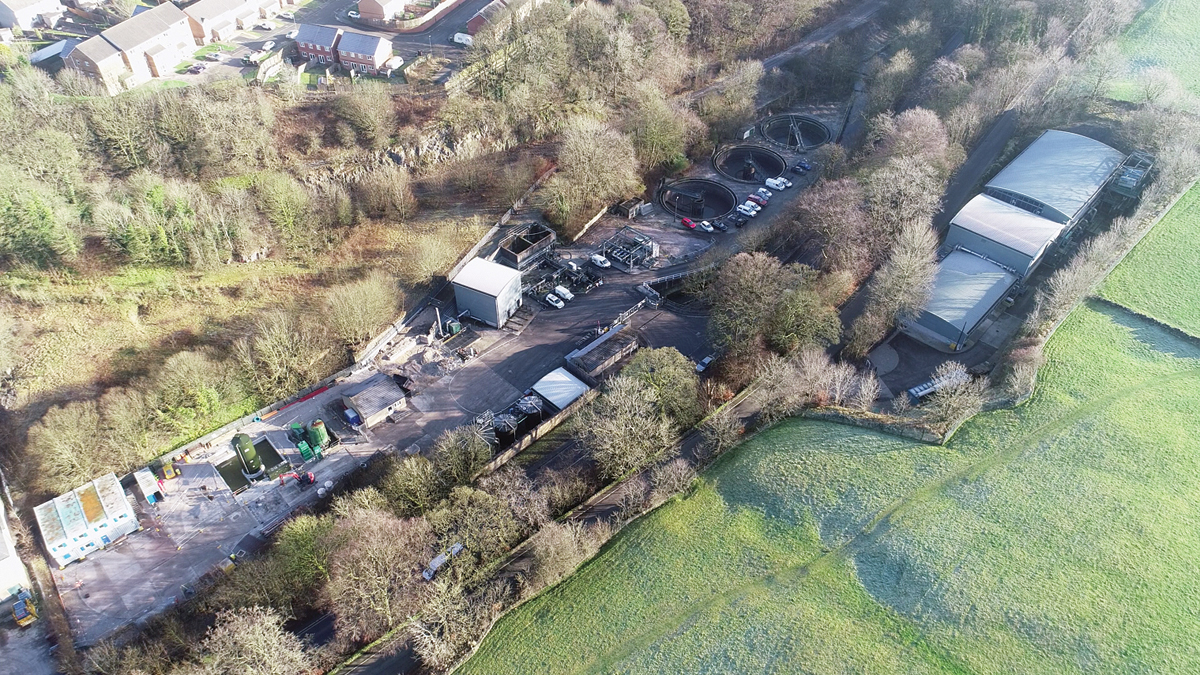
Aerial image of site in early stages – Courtesy of Mott MacDonald Bentley
The site is located in a deep, narrow valley that is constrained by cliff faces and a railway line to the north and the River Wye and the A6 Bakewell Road to the south. Space has been constrained on the site for many years, with the River Wye culverted underneath the site to make best use of the available land.
Available space on site dictated many of the decisions around location of new plant. Due to the site constraints, many of the design decisions were made to suit the limited space available. This led to several challenges around temporary works as working space was at a premium. Many of the lifts on site were carried out by a crawler crane sited on the floor of the new storm tank, the only location where it could be positioned to reach the new assets.
Part of the scope was the installation of a new storm tank; replacing a tank being removed to allow for the installation of a new primary settlement tank. Ideally the PST would have been built offline in an alternative location, but since there was nowhere on the site physically large enough for the tank, a rectangular storm tank integrated into the inlet works became the most sensible solution, allowing for a circular storm tank to be replaced with the PST.
The PST was constructed by extending the wall height and raising the base of the former storm tank. Whilst being a challenge to design and construct, this had a more positive environmental impact as it avoided the entire old structure being demolished to make way for the new PST.
The option of land purchase and relocation of the site was explored by Severn Trent in the early stages of the project but ultimately was found to be non-viable due to the land topography and location in close proximity to the Peak District National Park.
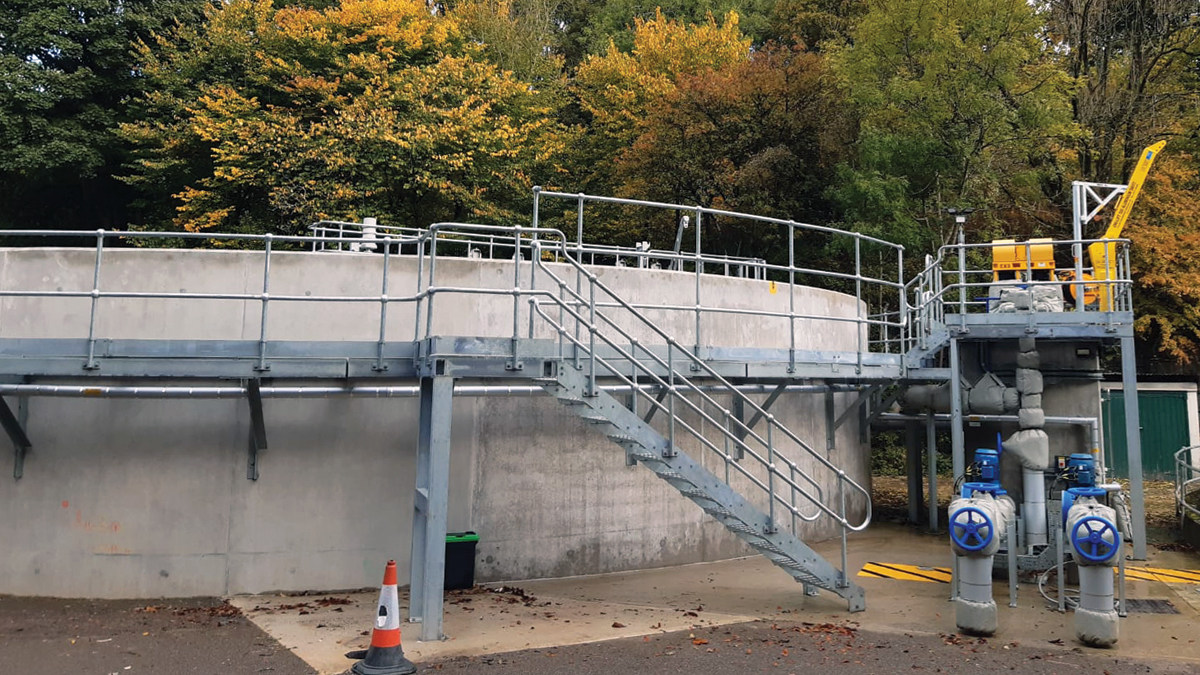
Primary settlement tank – Courtesy of Mott MacDonald Bentley
Outcomes
The site has met the WINEP imposed phosphorus limit of 0.2mg/l without issue. The installed sodium hydroxide rig is used seasonally to increase pH when more coagulant is required to reach the new consent. A combination of coagulant crude dosing post FFT flume (with pH balancing upstream of the flume validated by pH probes) and post-primary settlement dosing achieves the tightened consent.
Installation of a purpose-built inlet works with optimised channel tapers and hydraulic layout has had a profound impact on the quantity of screenings reaching the ASP and MBR plants. Originally the combination of 6mm, 3mm and 2mm screens struggled to manage the screenings removal for the site. The new inlet works with 6mm screens only has been found to be very effective. The 2mm screens remain on site and are working as required, having a far lower risk of bypass events than they used to experience. Bypass of the 2mm screens into the ASP directly increased the risk of MBR blockages. With this risk significantly reduced, the life expectancy of the membranes has returned to the manufacturer’s anticipated time periods.
The limited space available on site has been used to good effect to construct the new assets. A potentially very expensive (from a capital and operational perspective) relocation of the entire treatment process has been avoided through considered placement of equipment and the upgraded works is designed to meet the flows and loads of the design horizon. The site remained operational for the duration of the works with interruptions only to decommission and divert redundant assets.
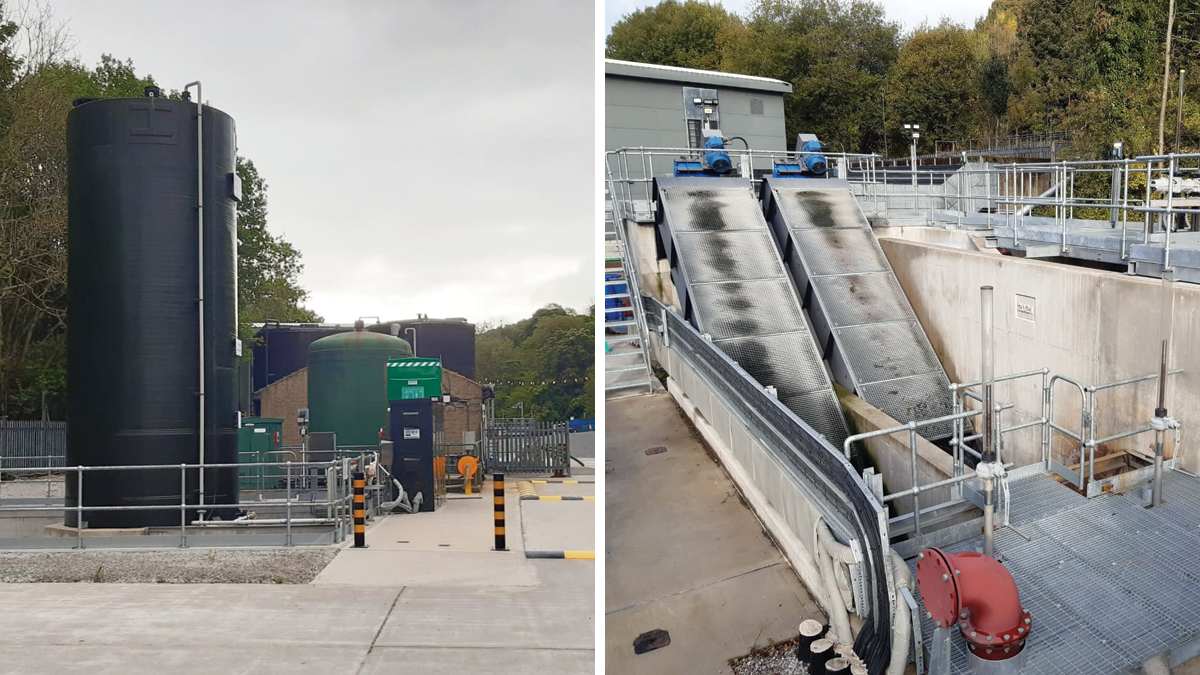
(left) Chemical dosing rig and (right) Inlet works screw pumps – Courtesy of Mott MacDonald Bentley
Conclusion
Works on site commenced in October 2019 to allow the sodium hydroxide rig to be constructed (allowing the new consent to be achieved by March 2020). The majority of the scheme followed, with handover of the completed project taking place in late summer 2022.
The editor and publishers would like to thank Kristian Roberts, Design Lead, and Alastair Sayers, Project Manager, both with Mott MacDonald Bentley, and Chris Toone, Project Manager with Severn Trent, for providing the above article for publication.
Acknowledgments
MMB would have not been able to complete this scheme without the help of numerous industry partners as well as teams and individuals within Severn Trent. A particular mention goes to Chris Toone, the scheme’s Project Manager who worked tirelessly between the MMB teams and Severn Trent staff to ensure the smooth running of the project. Yvette Sweeting and her team of Operators and Maintainers also deserve recognition for managing to operate the site within the confined space of this construction site for two years alongside MMB and also for their timely and helpful advice and assistance that avoided many potential delays. Her team worked with the MMB design team throughout the scheme to aid their understanding of the site and gave feedback on designs to improve the ultimate outcome. As a result of this support MMB felt that the project as a whole was truly collaborative and the successes detailed in this article would not have been achieved without it.
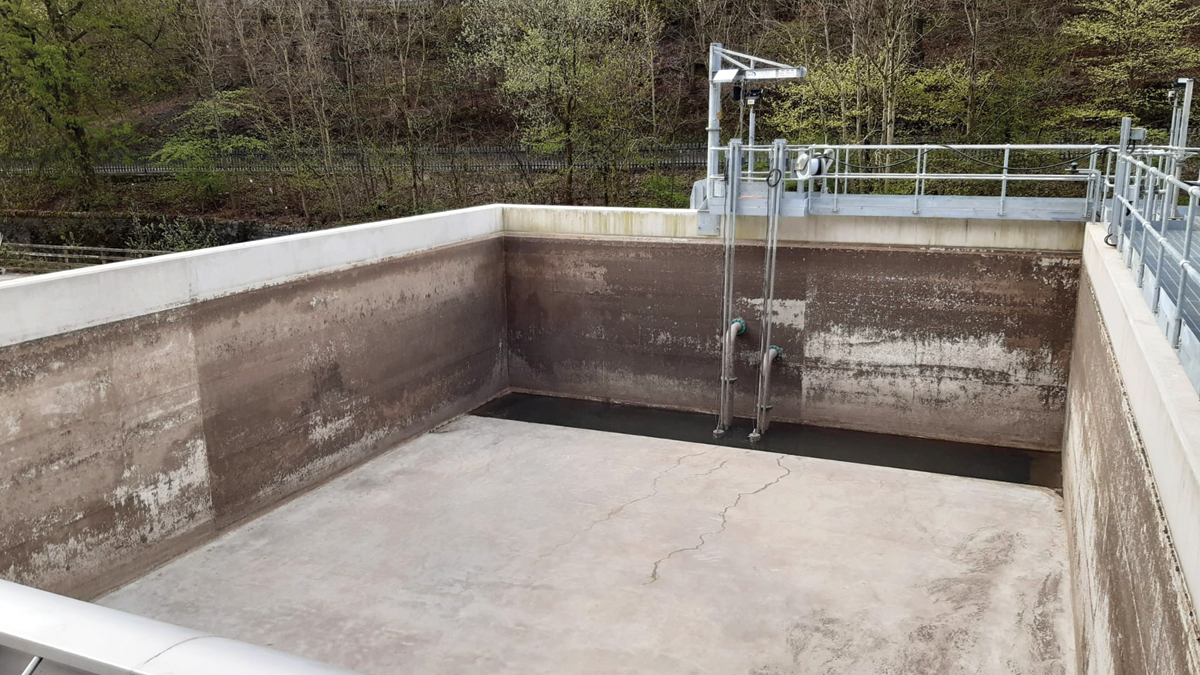
Storm tank – Courtesy of Mott MacDonald Bentley






